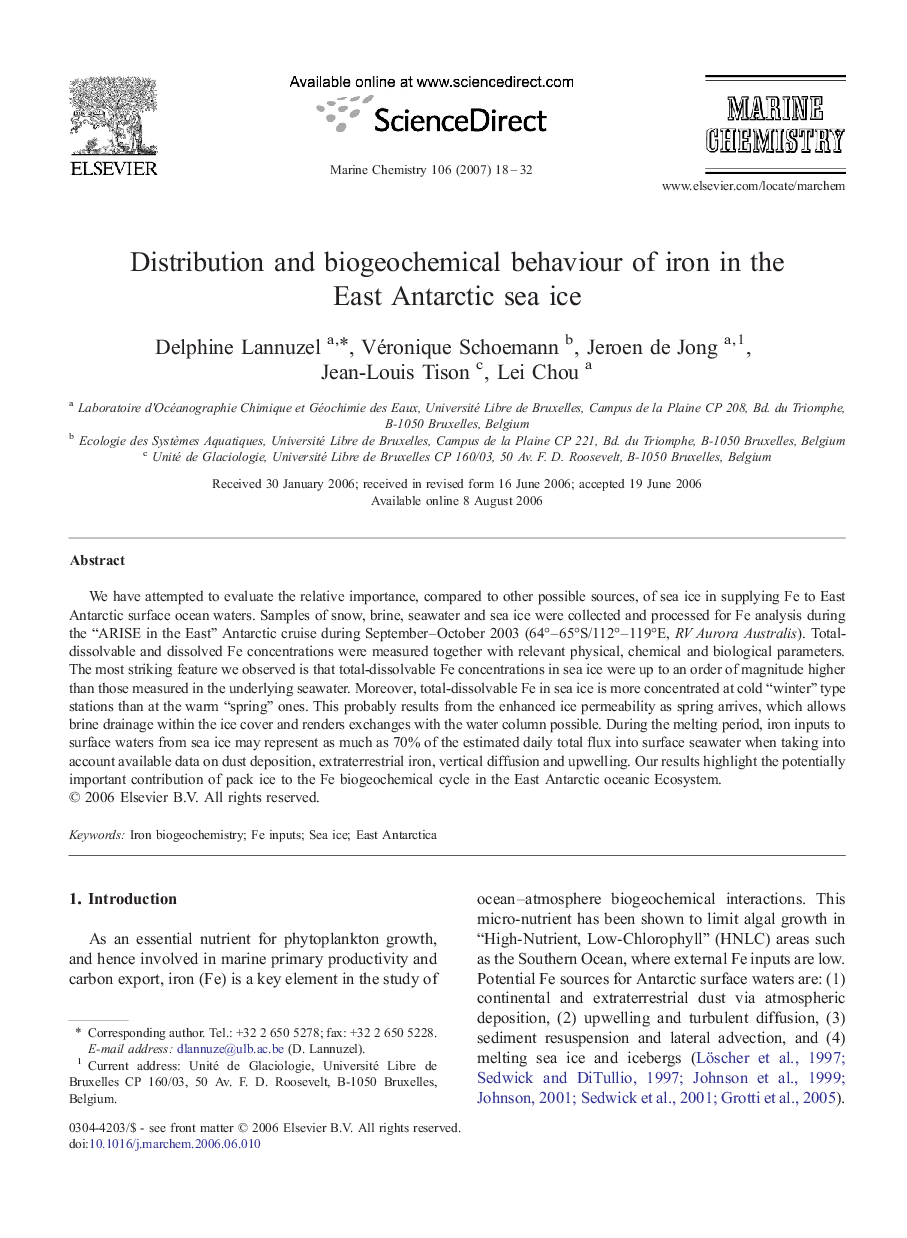| Article ID | Journal | Published Year | Pages | File Type |
|---|---|---|---|---|
| 1262579 | Marine Chemistry | 2007 | 15 Pages |
We have attempted to evaluate the relative importance, compared to other possible sources, of sea ice in supplying Fe to East Antarctic surface ocean waters. Samples of snow, brine, seawater and sea ice were collected and processed for Fe analysis during the “ARISE in the East” Antarctic cruise during September–October 2003 (64°–65°S/112°–119°E, RV Aurora Australis). Total-dissolvable and dissolved Fe concentrations were measured together with relevant physical, chemical and biological parameters. The most striking feature we observed is that total-dissolvable Fe concentrations in sea ice were up to an order of magnitude higher than those measured in the underlying seawater. Moreover, total-dissolvable Fe in sea ice is more concentrated at cold “winter” type stations than at the warm “spring” ones. This probably results from the enhanced ice permeability as spring arrives, which allows brine drainage within the ice cover and renders exchanges with the water column possible. During the melting period, iron inputs to surface waters from sea ice may represent as much as 70% of the estimated daily total flux into surface seawater when taking into account available data on dust deposition, extraterrestrial iron, vertical diffusion and upwelling. Our results highlight the potentially important contribution of pack ice to the Fe biogeochemical cycle in the East Antarctic oceanic Ecosystem.
